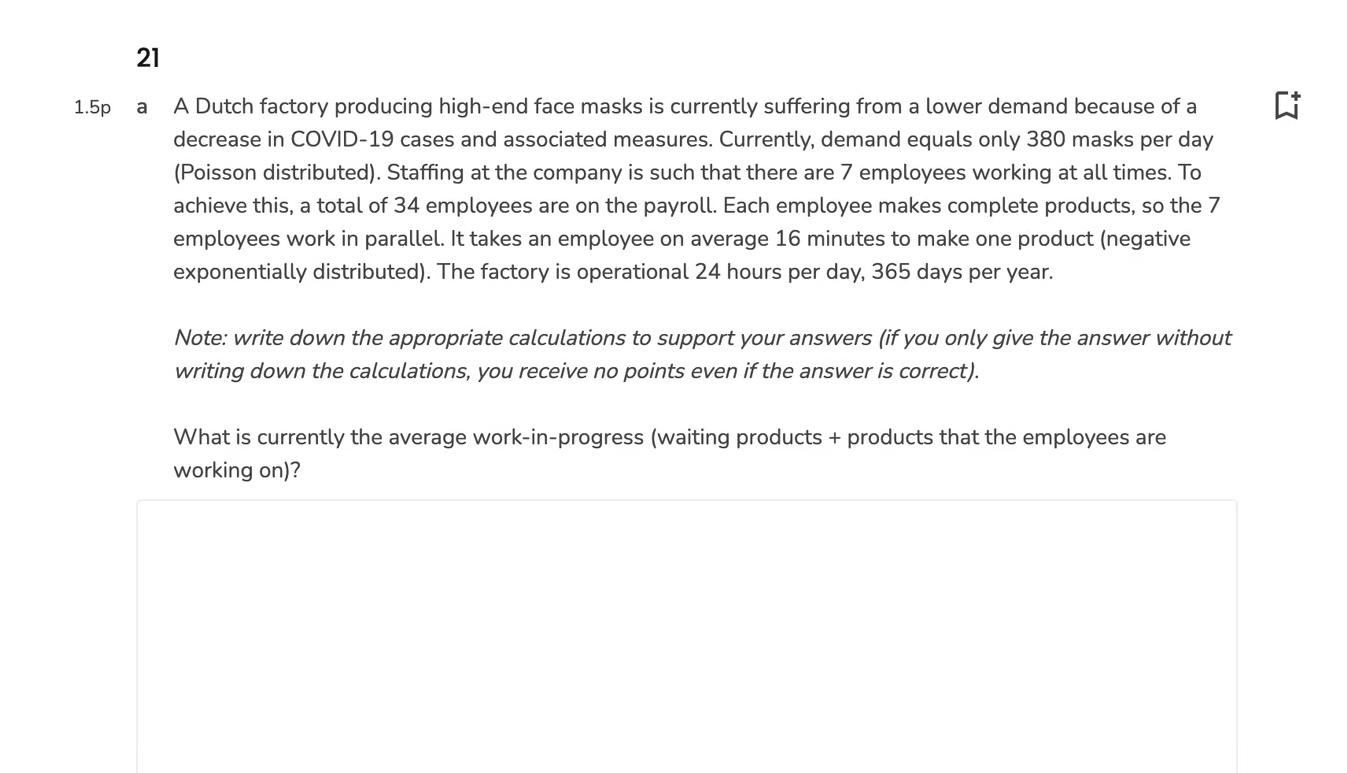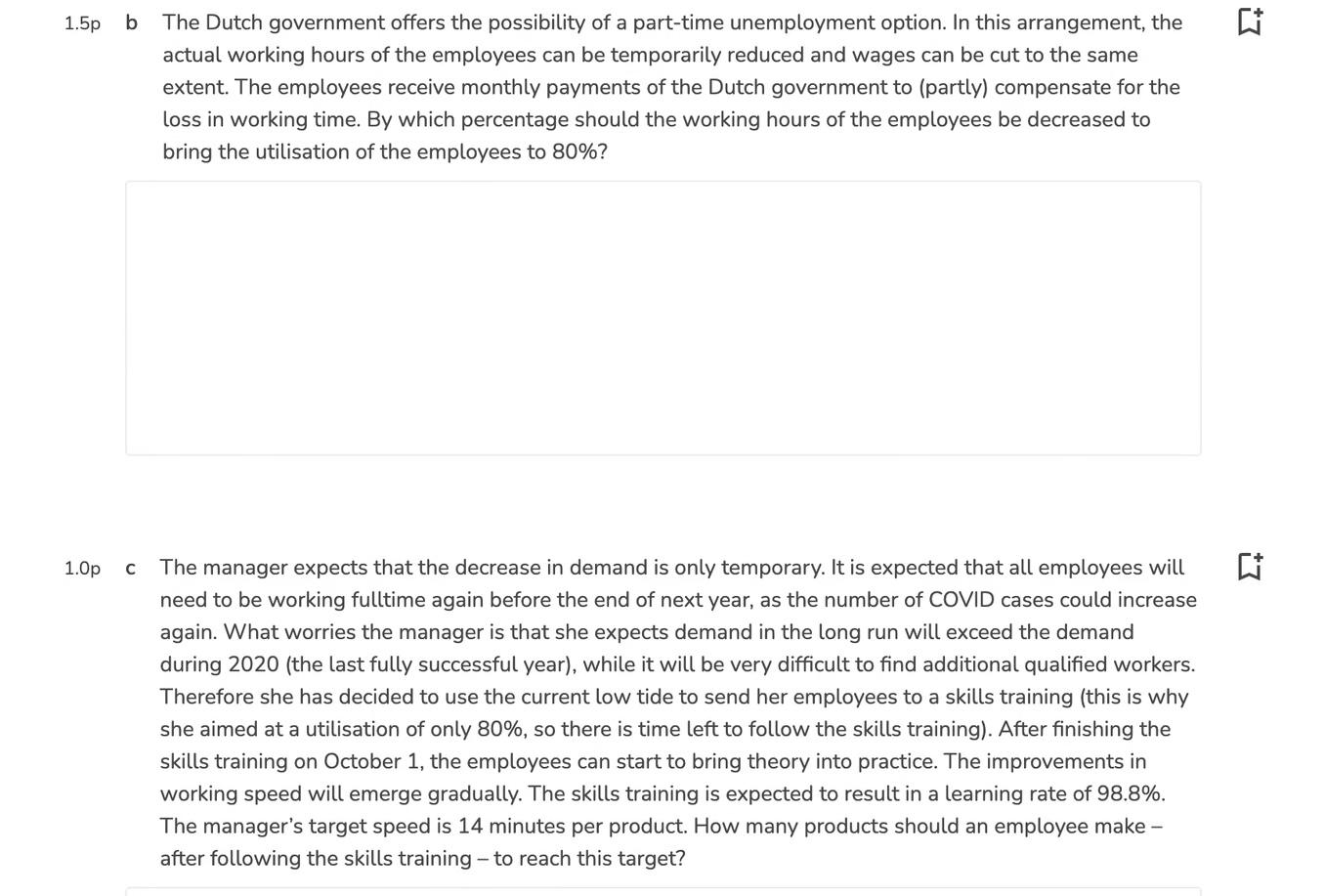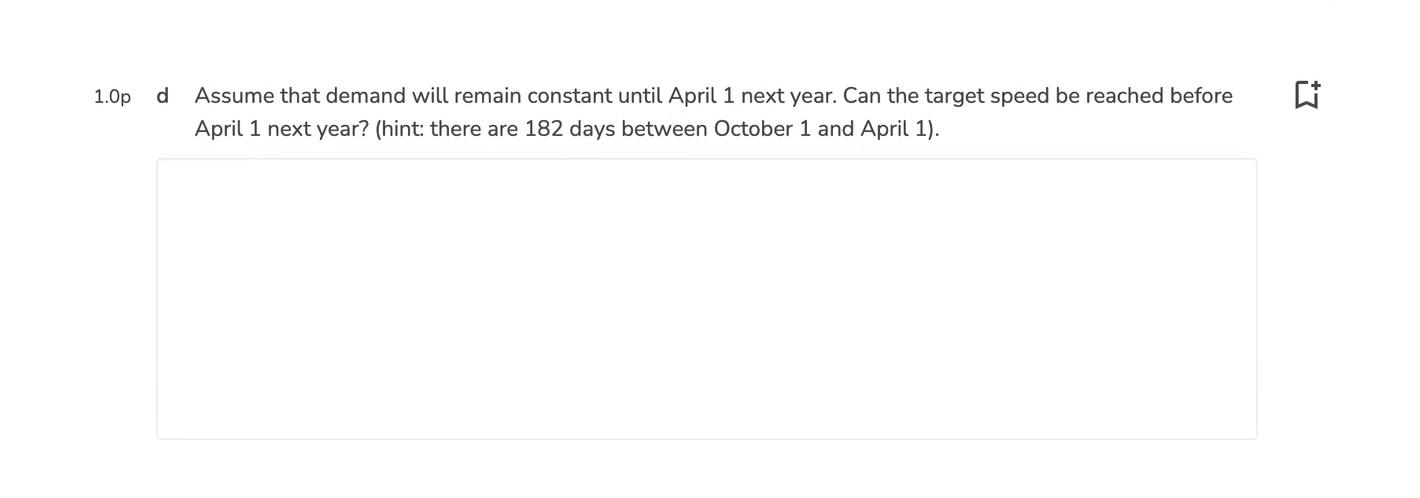


a A Dutch factory producing high-end face masks is currently suffering from a lower demand because of a decrease in COVID-19 cases and associated measures. Currently, demand equals only 380 masks per day (Poisson distributed). Staffing at the company is such that there are 7 employees working at all times. To achieve this, a total of 34 employees are on the payroll. Each employee makes complete products, so the 7 employees work in parallel. It takes an employee on average 16 minutes to make one product (negative exponentially distributed). The factory is operational 24 hours per day, 365 days per year. Note: write down the appropriate calculations to support your answers (if you only give the answer without writing down the calculations, you receive no points even if the answer is correct). What is currently the average work-in-progress (waiting products + products that the employees are working on)? 5p b The Dutch government offers the possibility of a part-time unemployment option. In this arrangement, the actual working hours of the employees can be temporarily reduced and wages can be cut to the same extent. The employees receive monthly payments of the Dutch government to (partly) compensate for the loss in working time. By which percentage should the working hours of the employees be decreased to bring the utilisation of the employees to 80% ? Op c The manager expects that the decrease in demand is only temporary. It is expected that all employees will need to be working fulltime again before the end of next year, as the number of COVID cases could increase again. What worries the manager is that she expects demand in the long run will exceed the demand during 2020 (the last fully successful year), while it will be very difficult to find additional qualified workers. Therefore she has decided to use the current low tide to send her employees to a skills training (this is why she aimed at a utilisation of only 80%, so there is time left to follow the skills training). After finishing the skills training on October 1, the employees can start to bring theory into practice. The improvements in working speed will emerge gradually. The skills training is expected to result in a learning rate of 98.8%. The manager's target speed is 14 minutes per product. How many products should an employee make after following the skills training - to reach this target? Op d Assume that demand will remain constant until April 1 next year. Can the target speed be reached before April 1 next year? (hint: there are 182 days between October 1 and April 1)









